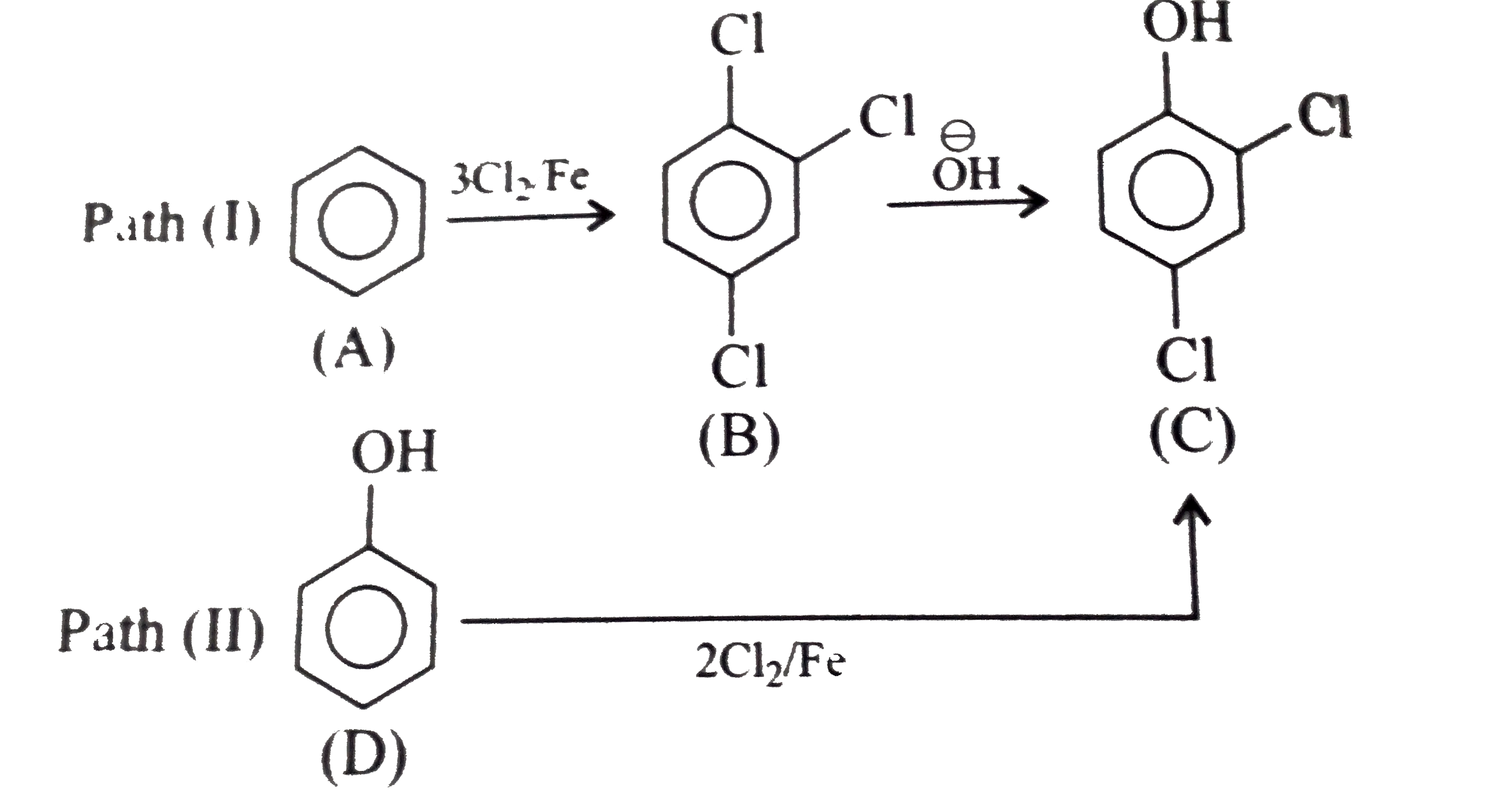Which of the following trend is/are correct?
CIO2>SO2>CO2>P2O5 (acidic nature)
Na>Si>Al>Mg(second I.P.)
S>Se>Te>O(electron affinity)
H3PO2>H3PO3>H3PO4(Ka1)
The correct Answer is:C, D
To solve the question regarding the correctness of the trends provided, let's analyze each statement step by step.
Step 1: Analyze the first statement regarding acidic character
The first statement discusses the acidic character of ClO2, SO2, CO2, and P2O5.
- Understanding Acidic Character: The acidic character of oxides generally increases with the percentage of oxygen in the compound.
- Comparison:
- ClO2 has 2 oxygen atoms.
- SO2 has 2 oxygen atoms.
- CO2 has 2 oxygen atoms.
- P2O5 has 5 oxygen atoms.
Since P2O5 has the highest percentage of oxygen, it should exhibit the strongest acidic character. Therefore, the statement claiming a specific trend is false.
Conclusion: The first statement is false.
Step 2: Analyze the second statement regarding second ionization potential
The second statement discusses the trend in second ionization potential for sodium, silicon, aluminum, and magnesium.
- Understanding Ionization Energy: The second ionization potential refers to the energy required to remove a second electron after the first has been removed.
- Electronic Configurations:
- Sodium (Na): (Ne) 3s¹
- Silicon (Si): (Ne) 3s² 3p²
- Aluminum (Al): (Ne) 3s² 3p¹
- Magnesium (Mg): (Ne) 3s²
- Analysis:
- For sodium, removing the second electron means removing from a stable configuration (3s²), which requires more energy.
- For aluminum, the second electron is removed from the 3s orbital, which is also stable.
- Silicon has a higher atomic mass, leading to a lower ionization energy due to increased shielding.
- Magnesium has a completely filled 3s² configuration, making it easier to remove the second electron.
Conclusion: The second statement is also false.
Step 3: Analyze the third statement regarding electron affinity
The third statement discusses the order of electron affinity for sulfur, selenium, tellurium, and oxygen.
- Understanding Electron Affinity: Electron affinity is the energy change when an electron is added to a neutral atom.
- Trends:
- Sulfur has a higher electron affinity due to the presence of d-orbitals, which can stabilize the added electron.
- Oxygen, despite being highly electronegative, has a lower electron affinity because it lacks d-orbitals for stabilization.
Conclusion: The third statement is true.
Step 4: Analyze the fourth statement regarding acidity of H3PO2, H3PO3, and H3PO4
The fourth statement discusses the acidity of H3PO2, H3PO3, and H3PO4.
- Understanding Acidity: The acidity of these phosphoric acids can be analyzed based on their structures and the stability of their conjugate bases.
- Structures:
- H3PO2 has one double bond and two single bonds to oxygen.
- H3PO3 has one double bond and two single bonds to oxygen.
- H3PO4 has one double bond and three single bonds to oxygen.
- Analysis:
- H3PO4 is the strongest acid due to the greater number of oxygen atoms, which stabilize the negative charge on the conjugate base after deprotonation.
- H3PO3 is less acidic than H3PO4 but more acidic than H3PO2.
Conclusion: The fourth statement is true.
Final Conclusion
The correct statements are:
- Statement 3 (regarding electron affinity) is true.
- Statement 4 (regarding acidity of phosphoric acids) is true.
Summary of Correct Answers
The correct options are C and D.
---
The first statement discusses the acidic character of ClO2, SO2, CO2, and P2O5.
- Comparison:
- ClO2 has 2 oxygen atoms.
- SO2 has 2 oxygen atoms.
- CO2 has 2 oxygen atoms.
- P2O5 has 5 oxygen atoms.
Since P2O5 has the highest percentage of oxygen, it should exhibit the strongest acidic character. Therefore, the statement claiming a specific trend is false.
The second statement discusses the trend in second ionization potential for sodium, silicon, aluminum, and magnesium.
- Electronic Configurations:
- Sodium (Na): (Ne) 3s¹
- Silicon (Si): (Ne) 3s² 3p²
- Aluminum (Al): (Ne) 3s² 3p¹
- Magnesium (Mg): (Ne) 3s²
- For sodium, removing the second electron means removing from a stable configuration (3s²), which requires more energy.
- For aluminum, the second electron is removed from the 3s orbital, which is also stable.
- Silicon has a higher atomic mass, leading to a lower ionization energy due to increased shielding.
- Magnesium has a completely filled 3s² configuration, making it easier to remove the second electron.
The third statement discusses the order of electron affinity for sulfur, selenium, tellurium, and oxygen.
- Trends:
- Sulfur has a higher electron affinity due to the presence of d-orbitals, which can stabilize the added electron.
- Oxygen, despite being highly electronegative, has a lower electron affinity because it lacks d-orbitals for stabilization.
The fourth statement discusses the acidity of H3PO2, H3PO3, and H3PO4.
- Structures:
- H3PO2 has one double bond and two single bonds to oxygen.
- H3PO3 has one double bond and two single bonds to oxygen.
- H3PO4 has one double bond and three single bonds to oxygen.
- H3PO4 is the strongest acid due to the greater number of oxygen atoms, which stabilize the negative charge on the conjugate base after deprotonation.
- H3PO3 is less acidic than H3PO4 but more acidic than H3PO2.
The correct statements are:
- Statement 3 (regarding electron affinity) is true.
- Statement 4 (regarding acidity of phosphoric acids) is true.
The correct options are C and D.
Similar Questions
Which of the following reaction are correct?
View SolutionWhich of the following options are correct ?
View SolutionWhich of the following options are correct?
View SolutionWhich of the following statement is/are correct?
View SolutionWhich of the following is/are correct ?
View Solutionwhich of the following statement is correct?
View SolutionWhich of the following statements is/are correct about the following is/are correct about the following reactions ?
 View Solution
View SolutionWhich of the following statements are correct ?
View SolutionWhich of the following statement is correct ?
View SolutionWhich of the following statements is correct?
View Solution

